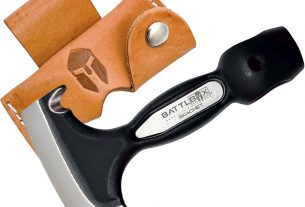If you’re a DIYer or a professional plumber, having the right tools is crucial to getting the job done right. One tool that should be in every plumber’s toolbox is the plumbing clamp tool. This versatile tool can be used for a wide range of tasks, from securing pipes to stopping leaks. In this article, we’ll take a closer look at the plumbing clamp tool and everything you need to know about using it.
What is a Plumbing Clamp Tool?
A plumbing clamp tool is a specialized tool designed for use in plumbing applications. It’s essentially a large metal ring with a screw mechanism that tightens the ring around an object. These tools are typically made from durable materials such as steel or aluminum and are designed to withstand heavy use.
Plumbing clamp tools come in various sizes to accommodate different pipe diameters and other objects. Some models have adjustable screws, allowing them to fit around objects of different sizes.
Uses of Plumbing Clamp Tool
The primary use of a plumbing clamp tool is to secure pipes in place. When working on plumbing systems, pipes often need to be held securely while fittings are attached or other work is performed. A clamp tool can hold the pipe firmly in place, allowing the plumber to work efficiently and safely.
Another common use of a plumbing clamp tool is to stop leaks. If there’s a small leak in a pipe, a clamp tool can be used to tighten down on the area around the leak, stopping or reducing the flow of water until more permanent repairs can be made.
Types of Plumbing Clamp Tools
There are several types of plumbing clamp tools available on the market today. Here are some of the most commonly used:
1. Pipe Repair Clamps: These clamps are designed specifically for repairing leaks in pipes. They consist of two halves that bolt together around the damaged area of the pipe.
2. Hinged Clamps: Hinged clamps are designed for use on pipes that cannot be easily removed from the plumbing system. They have a hinge that allows them to be opened and closed around the pipe.
3. Suspension Clamps: Suspension clamps are used to suspend pipes from hangers or framing members. They typically have a threaded rod that attaches to the clamp and allows it to be hung from a ceiling or wall.
4. Retaining Clamps: Retaining clamps are designed to hold pipes in place when they’re not being held by other supports. They can be used in combination with other types of clamps or on their own.
How to Use a Plumbing Clamp Tool
Using a plumbing clamp tool is relatively straightforward, but there are some things to keep in mind to ensure you’re using it correctly and safely. Here’s how to use a plumbing clamp tool:
1. Choose the right size clamp for the job. The clamp should fit snugly around the pipe or object you’re working on without being too loose or too tight.
2. Position the clamp where you want it. If you’re using the clamp to secure a pipe, make sure it’s positioned in such a way that it won’t slip or move during work.
3. Tighten the screw mechanism until the clamp is firmly secured around the pipe or object.
4. If necessary, make adjustments to the clamp as needed to ensure it’s holding everything securely.
5. When finished, loosen the screw mechanism and remove the clamp.
Safety Tips When Using Plumbing Clamp Tool
As with any tool, there are some safety considerations to keep in mind when using a plumbing clamp tool:
1. Always wear appropriate personal protective equipment (PPE), such as gloves and eye protection.
2. Only use a clamp tool for its intended purpose.
3. Never overtighten or force a clamp beyond its capacity.
4. Use caution when working with pipes or other objects that may be under pressure.
5. Always follow the manufacturer’s instructions when using a plumbing clamp tool.
Conclusion
A plumbing clamp tool is an essential tool for any DIYer or professional plumber. With its ability to secure pipes and stop leaks, it can save time and money while ensuring a job is done correctly. By following the tips and techniques outlined in this article, you’ll be able to use a plumbing clamp tool safely and effectively for all your plumbing needs.
References:
https://www.familyhandyman.com/project/how-to-use-a-clamp-on-pipe-repair/
https://www.homedepot.com/c/ab/types-of-pipe-clamps/9ba683603be9fa5395fab901f3af7f0
https://www.doityourself.com/stry/how-to-use-plumbing-clamp-tools




